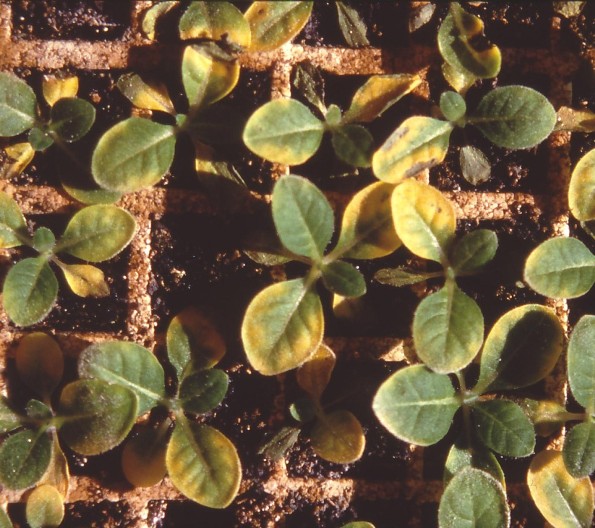Alkalinity refers to the capacity of the water to neutralize acid or to
resist a lowering of the water pH. The major
contributors to alkalinity in natural waters are bicarbonates. Alkalinity
influences plant growth by causing the pH of
the growing medium to increase. At high pH, some nutrients become less
available, resulting in nutrient deficiencies.
High alkalinity can also contribute to the accumulation of ammonia in the
growing medium, causing poor plant growth.
At low alkalinity levels, less than 50 ppm, the water has very little
capacity to buffer against a pH decrease so a
non-acid fertilizer is recommended. If the alkalinity is between 50 and 100 ppm
no corrective action is needed.
For alkalinity levels between 100 and 200 ppm the recommended action will depend
on the calcium level of the
water (Table 2). Calcium in the water acts as a natural control on the activity
of bicarbonate, so more alkalinity
can be tolerated in the presence of a higher level of calcium.
When the alkalinity is greater than 200 ppm, it is recommended that the
bicarbonate be neutralized to a level of 100
ppm. The addition of mineral acids will be necessary to reduce the
alkalinity to an acceptable level. The amount of
acid needed will depend on the type and concentration of the acid used.
For more details go to pub listed below.
AGR-164
Water Quality Guidelines for Tobacco Float Systems
Bob Pearce and Gary Palmer

<< Back to Float Gallery